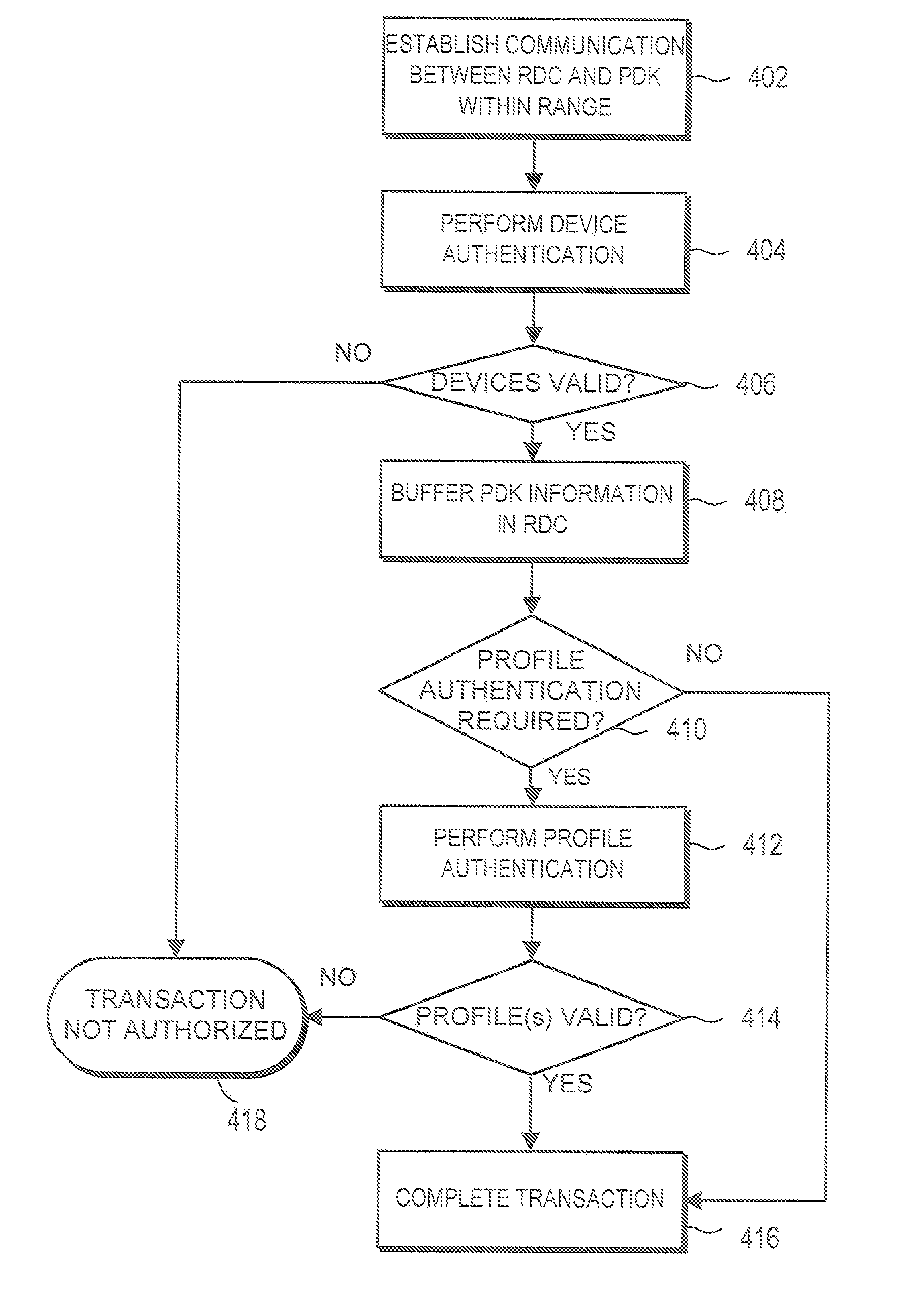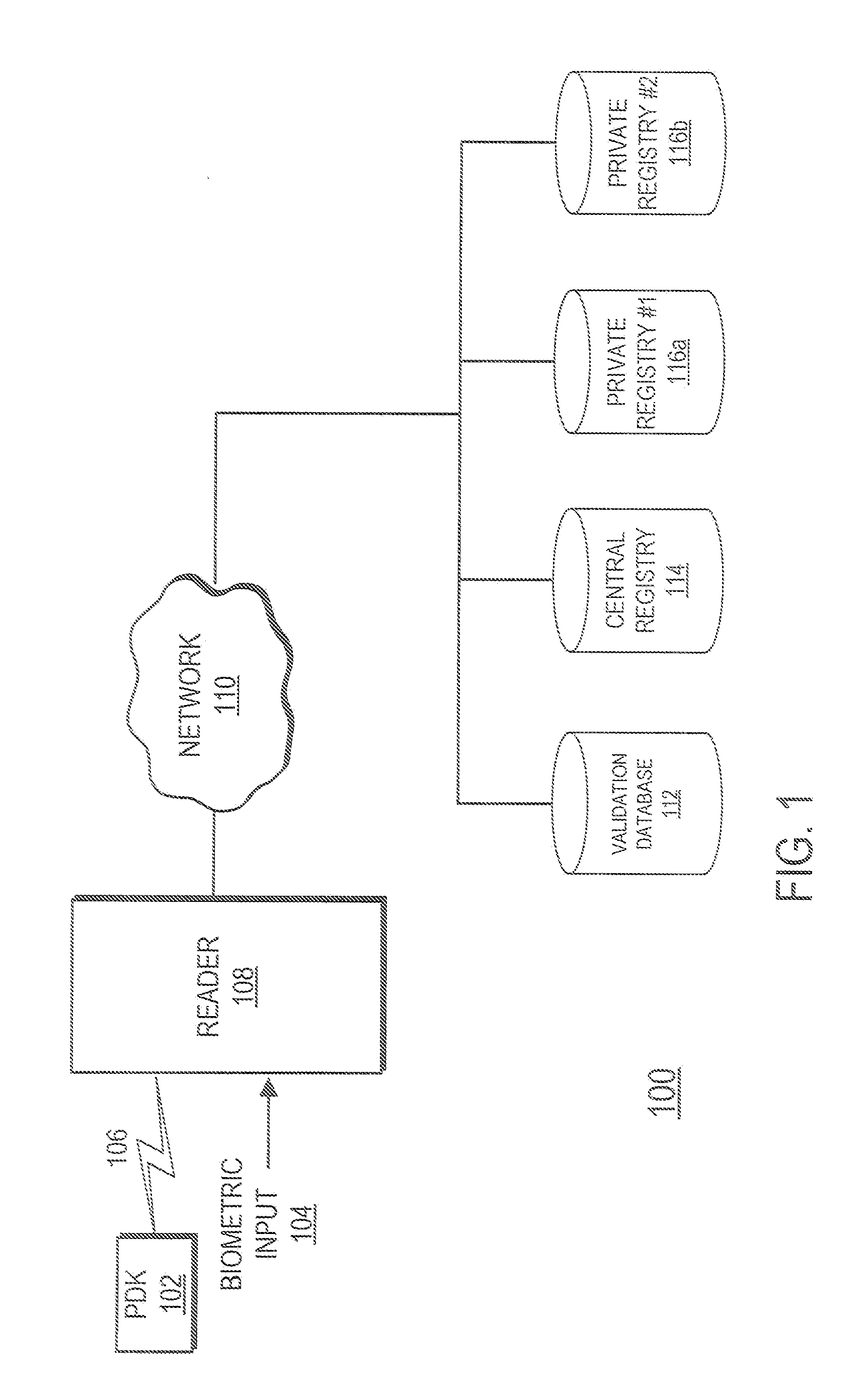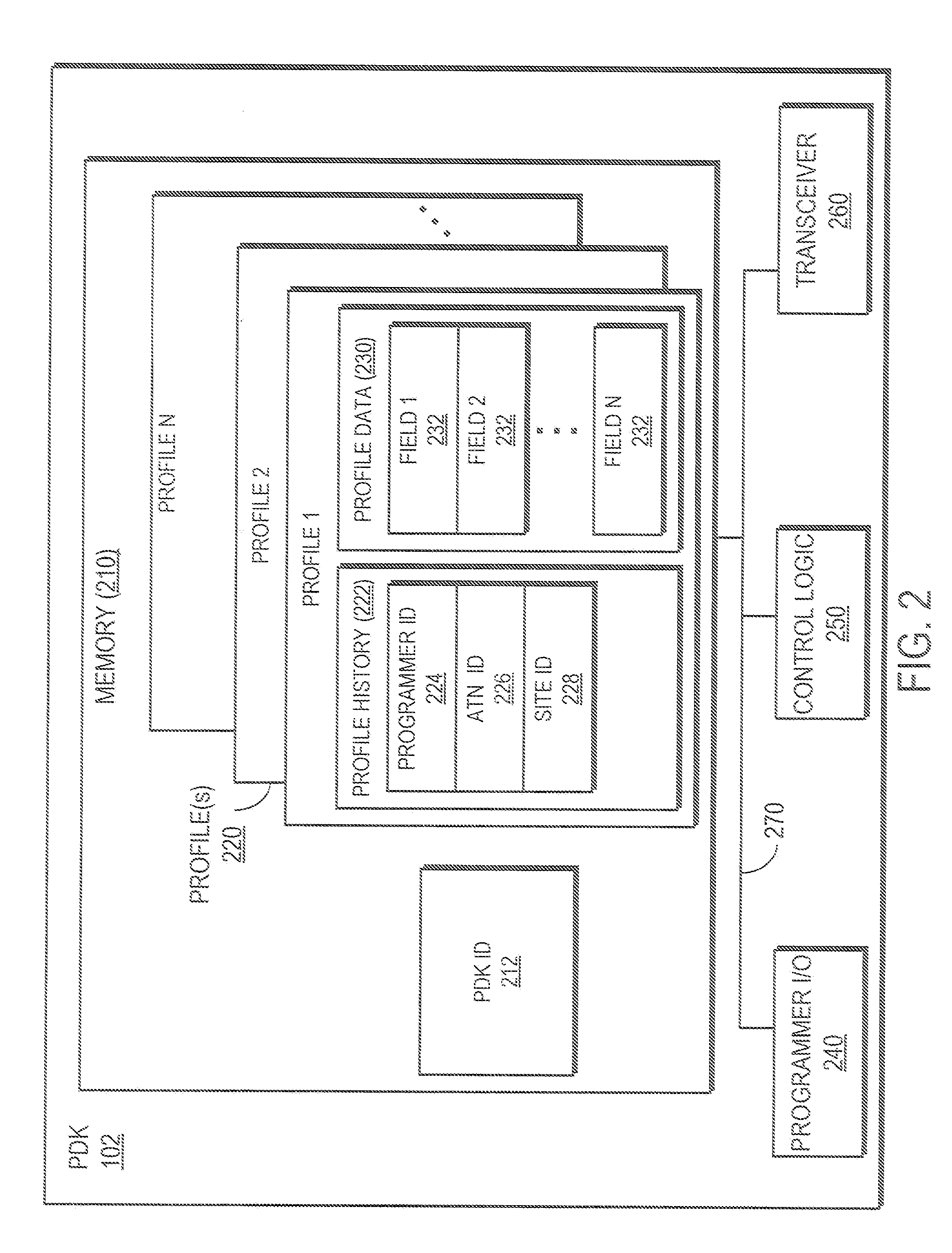Personal digital key initialization and registration for secure transactions
a technology of personal digital keys and authentication, applied in the field of electronic authentication, can solve the problems of insufficient assurance, add unwanted complexity and delay to transactions, and provide secure transaction processing and access control. achieve the effect of efficient, secure and highly reliable authentication
- Summary
- Abstract
- Description
- Claims
- Application Information
AI Technical Summary
Benefits of technology
Problems solved by technology
Method used
Image
Examples
Embodiment Construction
[0035]FIG. 1 is a high level block diagram illustrating a system for securely authenticating an individual for transaction-processing and / or access control applications. The system 100 comprises a Personal Digital Key (PDK) 102, a Reader 108, a network 110 and one or more external databases including a validation database 112, a Central Registry 114 and one or more private registries 116. The Reader 108 is coupled to the PDK 102 by a wireless link 106 and coupled to a network 110 by either a wired or wireless link. The Reader 108 is also adapted to receive a biometric input 104 from a user and is capable of displaying status to a user. The network 110 couples the validation database 112, the Central Registry 114 and two private registries 116 to the Reader 108. In alternative embodiments, different or additional external registries or databases may be coupled to the network 110. In another embodiment, the Reader 108 operates as a standalone device without a connection to the network...
PUM
 Login to View More
Login to View More Abstract
Description
Claims
Application Information
 Login to View More
Login to View More - R&D
- Intellectual Property
- Life Sciences
- Materials
- Tech Scout
- Unparalleled Data Quality
- Higher Quality Content
- 60% Fewer Hallucinations
Browse by: Latest US Patents, China's latest patents, Technical Efficacy Thesaurus, Application Domain, Technology Topic, Popular Technical Reports.
© 2025 PatSnap. All rights reserved.Legal|Privacy policy|Modern Slavery Act Transparency Statement|Sitemap|About US| Contact US: help@patsnap.com



